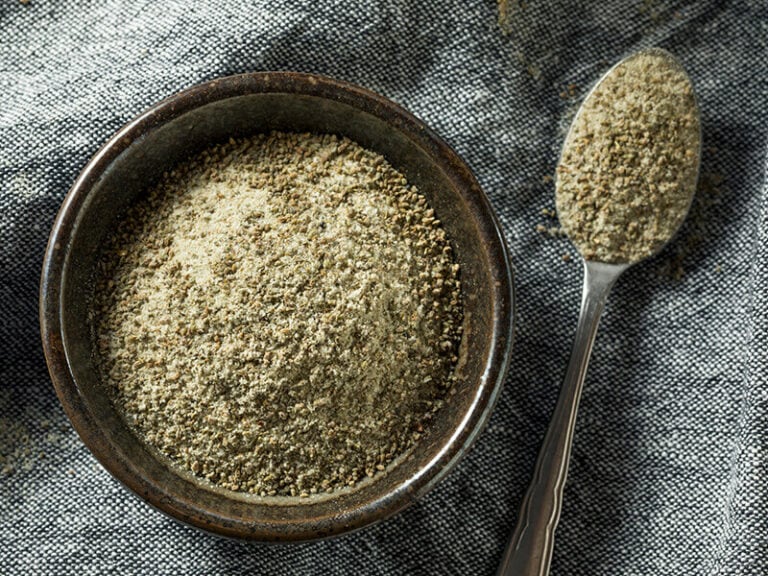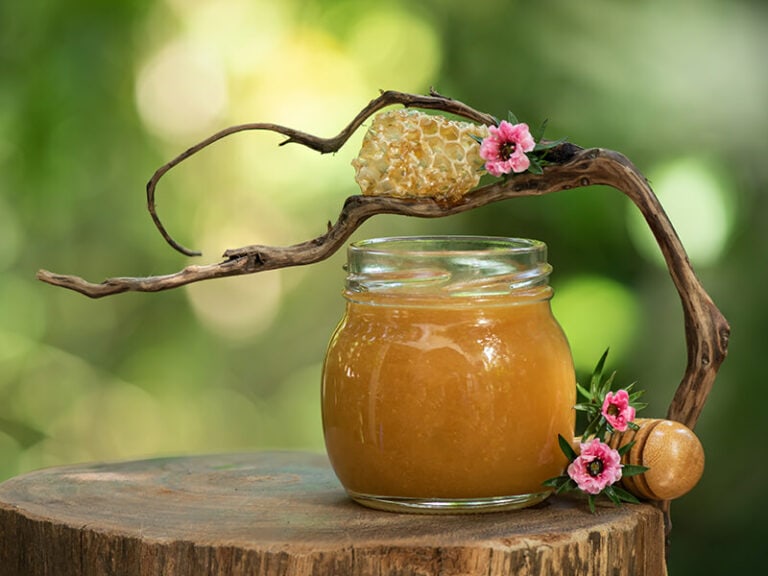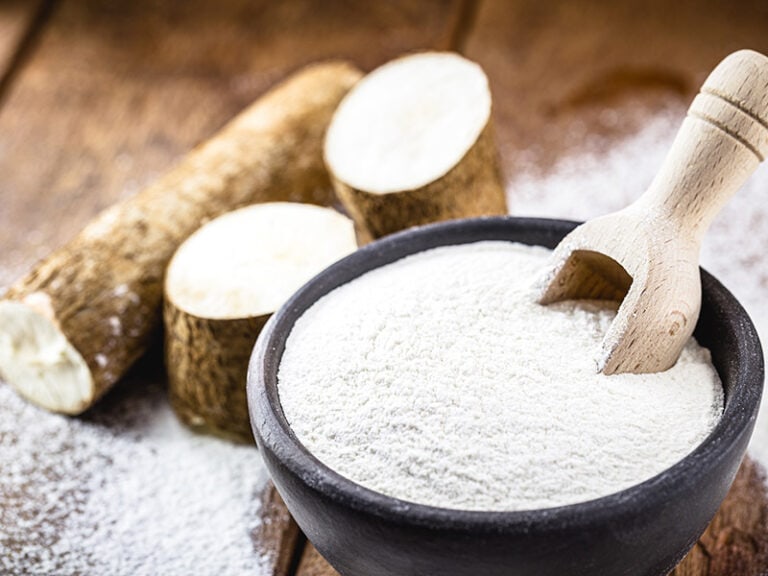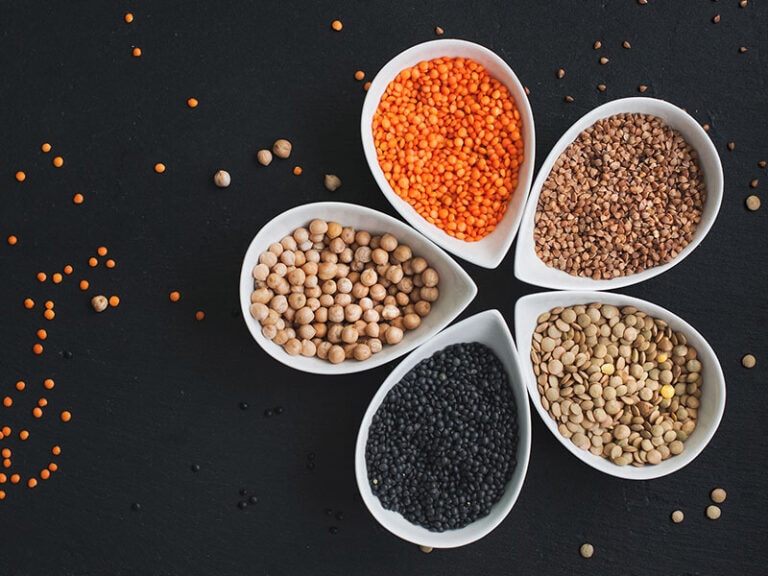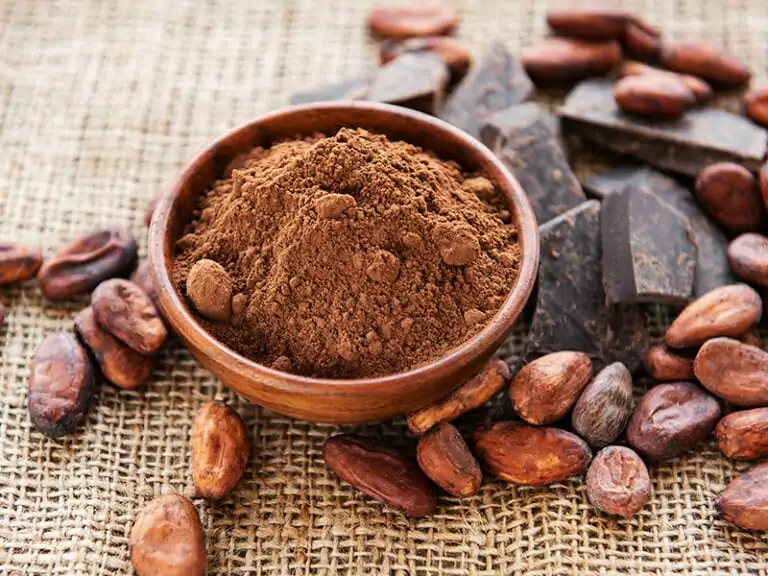Ube vs. Taro, do you know how to tell them apart? These two root vegetables are both parts of the Arcease family that have similarities in terms of shape and appearance. However, they are two different kinds and share different uses in cooking, so don’t be confused.
Let’s spend a little time getting to know more about them. Once you know them well, you will realize they are very noticeably different and save more time, money, and effort to make your favorite dishes without buying the wrong item.
Especially for those who love taro bubble tea, do not skip this useful post. Let me make it clear for you.
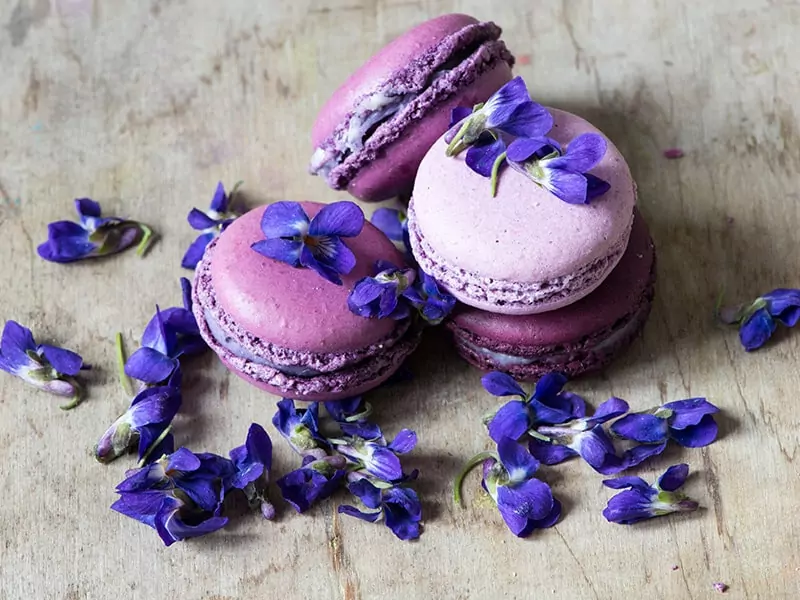
Why Do People Tend To Confuse Ube And Taro?
Let’s dig into the reasons why these two root vegetables cause so much confusion for people. It is not hard to find many articles about the difference between them because they look like “twin brothers” to each other.
If you take a glance at a whole raw version of them, you will barely know. Also, it is a big burden for people to buy a whole vegetable and prepare it from the start, so they tend to purchase it in powder form.
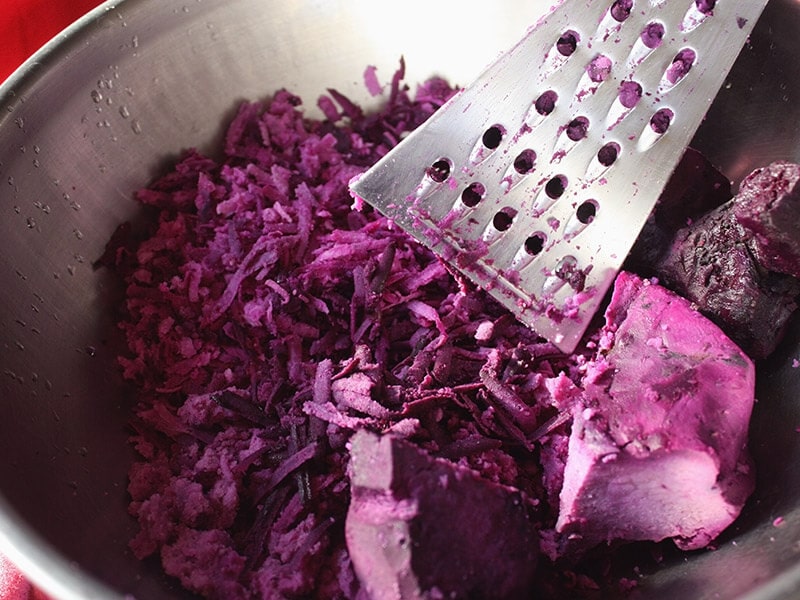
Once they are in powder form, your confusion increases more because they both look… purple. Each of the products has a different taste in flavor and texture. Therefore, if you choose the wrong one for your dishes, it can be so annoying to you.
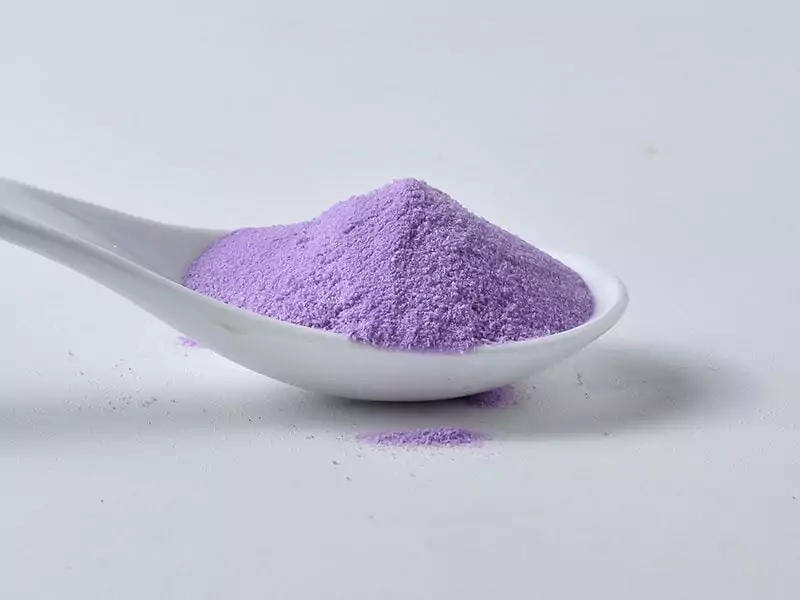
What Are Ube And Taro?
Some of you might be unfamiliar or never heard of these roots. When it comes to purple, eggplants or grapes are what comes first to your mind, right? For Asians, these two will be the priority for many tasty purple-colored dishes.
So, what are Ube and Taro?
Ube
Ube (Dioscorea Alata), known as purple yam, is a tuberous vegetable that is indigenous to Southeast Asia, especially in the Philippines. It is not the same as purple sweet potato, but they both can be used interchangeably in recipes.
Nowadays, this yam has been growing in the U.S due to its catchy purple color and nutty flavor. There is a rise in hip restaurants in the U.S that captivate people’s attention with fancy violet-colored ube food, such as Jeepney in New York or Bad Saint in Washington D.C.
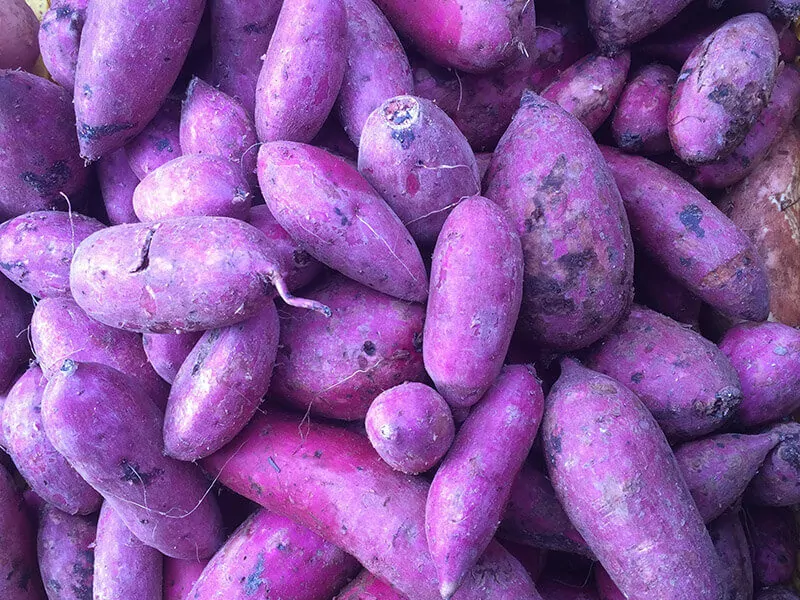
Taro
Taro (Colocasia Esculenta), known as dasheen, is a tropical herbaceous plant that is consumed primarily in South Asia, Africa, and Oceanic areas. This root vegetable has a milder sweet taste and nutty flavor. Therefore, it is used commonly in Bubble Tea.
If you are a Boba lover, I am sure you will fall for its flavor. And if you are not, let’s give this trendy, vibrant vegetable a shot so you will not miss a chance to join in this fancy purple party.
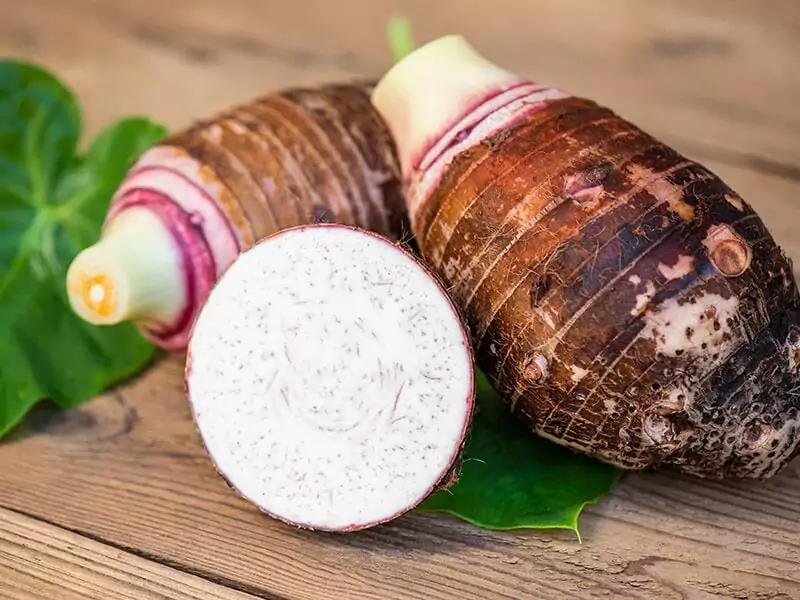
What Are The Differences Between Ube And Taro?
Generally, they both seem similar, but if you look at their inside, you can obviously see differences in their texture, color, etc. However, when they become cooked and ready-to-eat products, many people cannot figure out which is Ube or Taro.
Here Is The Summary Of Differences Between Ube And Taro
Let’s take a look at an overview of the differences between Ube and Taro in the following table:
Origin
Both Ube and Taro are famous and so familiar to Asians’ culture. However, they are also the staple crop in some parts of the world.
Ube
Initially, Dioscorea Alata is grown around the world. Today, this purple yam is a staple crop in West Africa, South America, and Southeast Asia, especially the Philippines (1).
In the 1500s, Ube came to North America and was first introduced in Florida by the Spanish and Portuguese.
Interested in how to grow Ube plants? Learn here for the process.
Taro
This kind of Colocasia Esculenta is one of the most ancient cultivated crops. It can be found primarily in tropical and subtropical areas such as South to East Asia, Papua New Guinea, and the northeastern part of the Indian Ocean. Taro is also an integral part of Hawaiian cuisine (2).
Find out the easy way to plant a Taro by yourself in the garden. It’s super easy.
Flavor
Despite the similarity in their look, each has its own signature and particular flavor, which is considered one of the criteria to distinguish Ube and Taro:
Ube
Ube has a sweet flavor that is similar to vanilla or pistachio. Sometimes it brings to people a slightly nutty and mellow flavor, which is a great base for making many lovey-dovey types of desserts + (type of dessert).
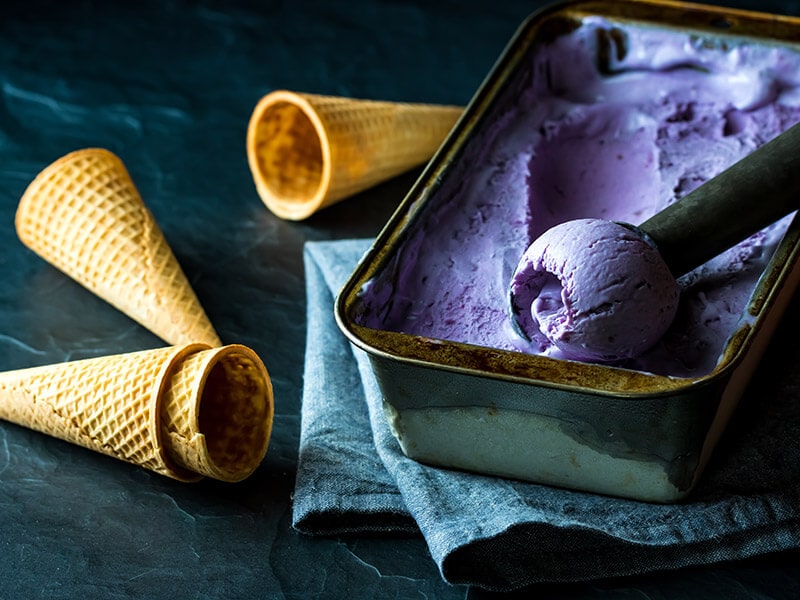
Taro
How about the flavor of taro + (what does taro taste like)? When taro is cooked, it may have a very much similar flavor as Ube, but it will be slightly different if you notice. A little hint of vanilla-like flavor, but a milder sweet aroma than Ube’s.
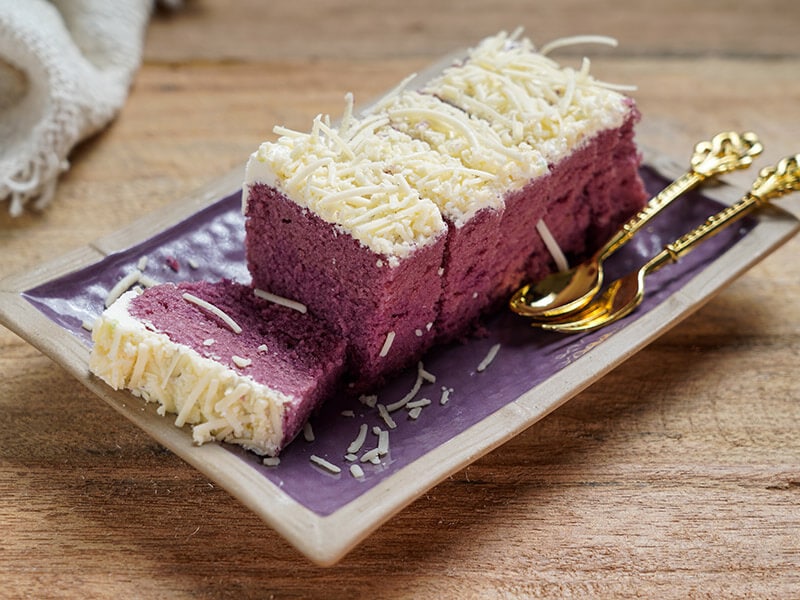
Texture
Another criterion to differentiate Ube and Taro is their texture. When you cook them, it becomes a big difference in their essence compared to their original looks.
Ube
Cooked ube has a soft and custard-like mixture. Its original taste is vanilla-like gentle, but if you add more sugar/honey, it can wake up a more intense sweetness in your mouth.
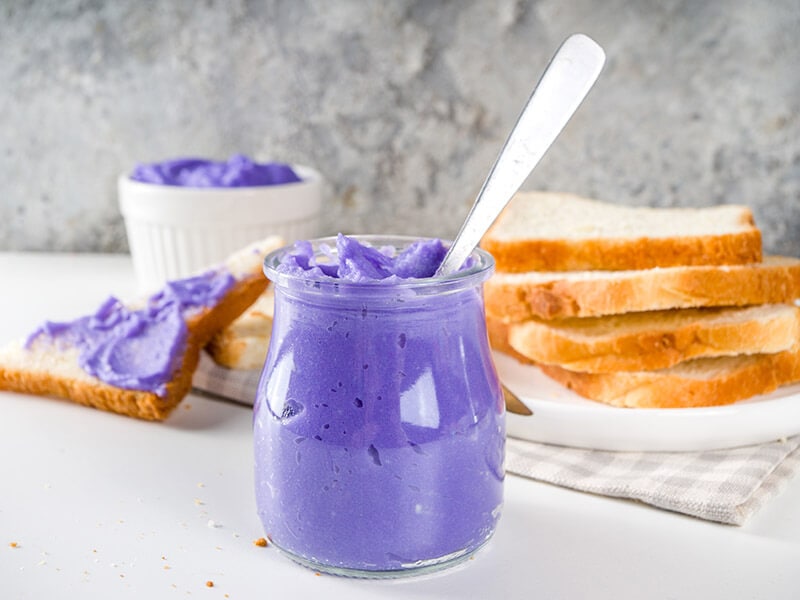
Taro
Its texture is a bit lush and creamy with a mild nutty sweet flavor, so it can be used properly from sweet desserts to savory meals such as soup, fries, and various cake varieties (type of cakes), which is pretty much the same use as a sweet potato.
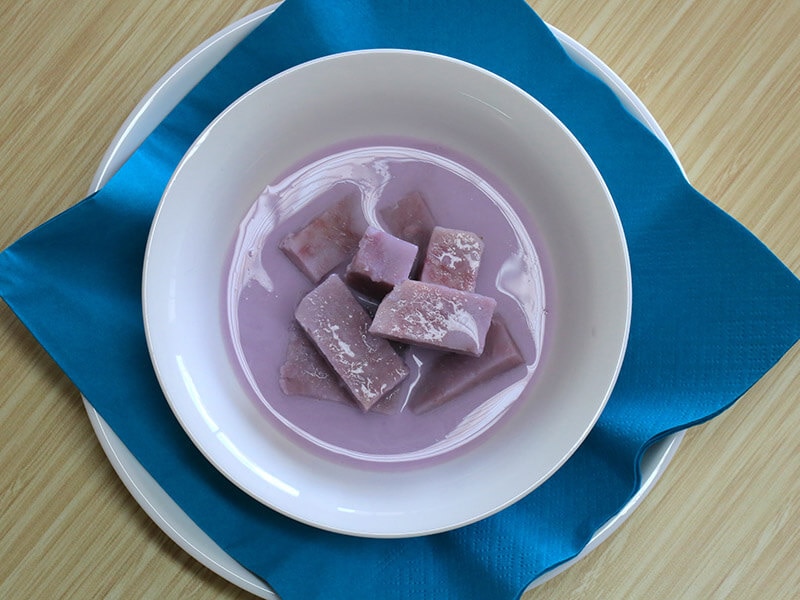
Appearances
When it comes to purple food, Ube and Taro are also great nominees to create lots of eye-catching dishes.
Ube
Ube equipped itself with a bright and saturated purple color in the flesh. Meanwhile, the skin outside has a grayish-brown and is pretty much the same as sweet potato, but darker. Its shape can be varied from round to cylindrical.
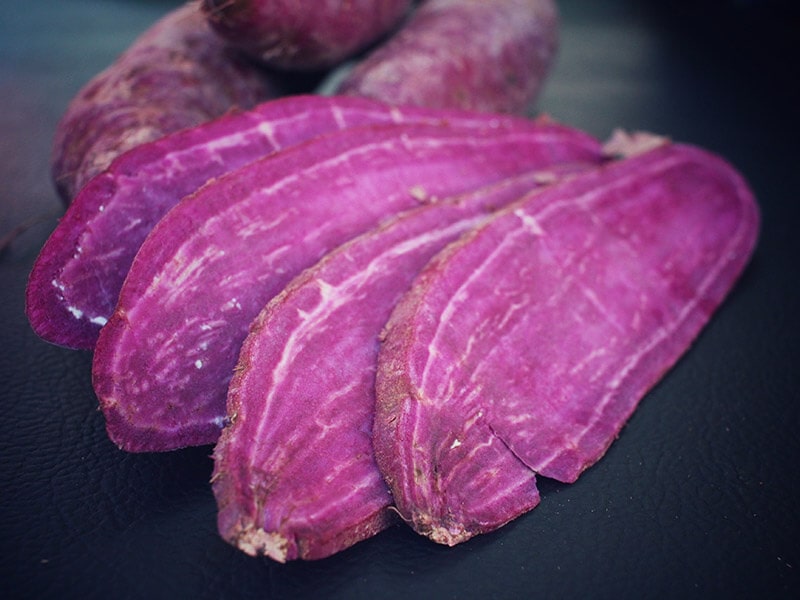
Taro
The taro corms are large, with a little hairy brown skin and pale beige, creamy-white flesh inside. You can find some purple specks on its flesh.
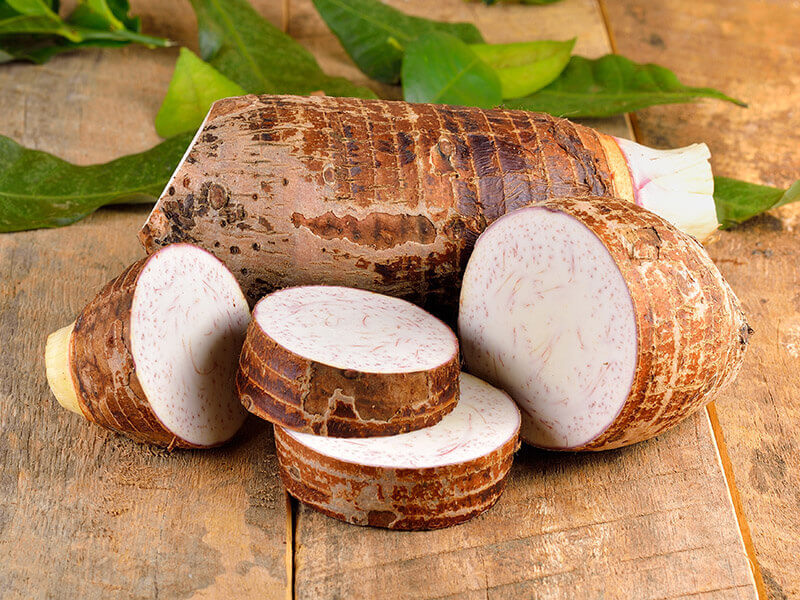
Culinary Uses
You can use Ube and Taro flexibly in a variety of simple, sweet to savory desserts + (easy dessert), but you should not share them in the same recipes, so it will require you to pick the right item for the right dish.
Ube
Ube is mainly for desserts which you can fill in donuts, cream cakes, pancakes,… Especially in Filipino cuisine + (Filipino foods), Ube Halaya or Sweet Purple Yam is much like national dishes. Meanwhile, in the U.S, it is especially known for the popular ube-flavored ice cream.
You may be curious about what common dishes are made from Ube vegetables, let’s find out.
Taro
There are many popular sweet treats that you can find Taro in them such as bubble tea, cupcakes, and ice cream. However, this root vegetable is also treated as sweet potato a lot, for you can make it as fries, baked taro cake, pastries or served and stuffed with meat, fish,…
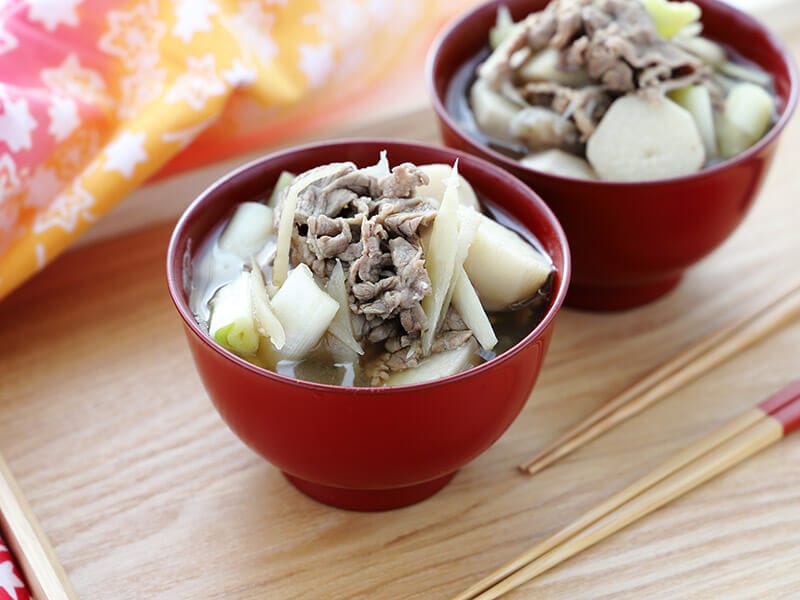
Nutrition
Ube and Taro are popular vegetables that provide high calories, vitamins, and fiber. Particularly:
Ube
This purple yam has a high source of nutrition: carbs and vitamin C. One cup of cooked Ube can provide (3) :
- Calories: 140 (on average)
- Carbs: 27 gr
- Protein: 1 gr
- Fat: 0.1 gr
- Fiber: 4 gr
- Vitamin C: 40% of Daily Value
- Vitamin A: 4% of Daily Value
Taro
No less than Ube, Taro is also very rich in nutritions that bring your body significant benefits if taken regularly in your daily life. Here are the nutrients per 132 gr serving (4):
- Calories: 187 (on average)
- Protein: 1 gr
- Sugar: 0.6 gr
- Fat: 0.1 gr
- Fiber: 6.7 gr
- Carbohydrates: 39 gr
- Vitamin E: 19% of Daily Value
- Vitamin C: 11% of Daily Value
Now you know what they are already. If you are still interested, let’s move on to see how to prepare these vegetables if you want to buy them and make them for a meal for yourself.
Can You Substitute Ube With Taro?
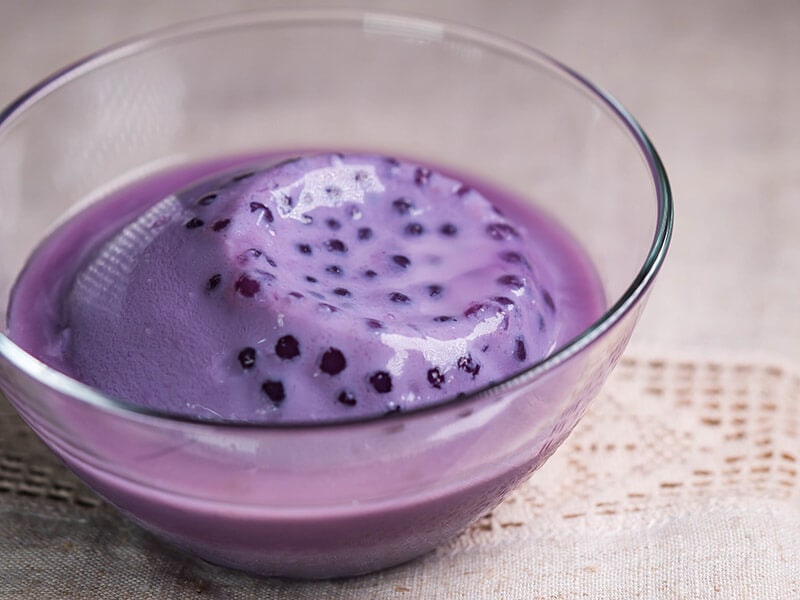
Even though both Ube and Taro are from the Potato family, they are very different in flavor and taste. Therefore, it is highly recommended that you shouldn’t use them interchangeably in your dishes.
As I mentioned above, Ube has a much sweeter taste and a more creamy texture after cooking. Somehow, you might not want your ube ice cream to taste a bit plain and seem thick in the mixture.
Moreover, in terms of the color, Ube has an intensive hue of purple while taro ranges from pale beige to light lavender color. So, a significant eye-catching colored dish or a fancy violet-like dish can be up to your interest.
Yet, generally, it’s totally fine if you still want to try or mix them both in your dishes. Cooking is a field that allows you to be creative, after all.
Find out more about the ube recipes in a restaurant with an absolute taste that cannot be replaced.
How To Prepare Ube And Taro For Cooking
These vegetable roots may not be easy to make, like carrots or potatoes, if you don’t get familiar with them. Therefore, it is necessary for you to grasp the preparation well and cook them correctly to bring the deliciousness to your meal.
Raw Ube Preparation
With the same texture as Sweet Potato, you can easily prepare a raw Ube by washing it, and then peeling its skin. However, there are 2 ways for you to prep this Ube vegetable:
- Cut or slice it into small pieces (same size as potato chips if you make fries).
- Use a blade of knife, scissor, or a spoon to scrape the vegetable (this way you can use it to make soup or jam easier with the thicker and more flexible mixture).
Ube Recipes
In fact, Ube has not yet been popular in the U.S market, but it shares many delicious dishes worth trying once in your life. I am sure you won’t regret it if you try these popular dishes below:
Ube Ice-Cream
Ube-flavored ice cream will bring you a slightly sweet flavor, and a wind of lavender scents comes across your mind. It can be a scoop of ice cream on top of a cupcake or decorate it into a beautiful glass of ice cream with a topping scattered around. So delicious!
Ube Mochi Waffles
Sounds fascinating, right?
This dish will surprise you at the very first bite with the crispy outside but chewy inside at the same time. Not only that, this product is gluten-free, so you can consume it whatever you like without worrying about gaining weight and causing bad effects on your health.
Ube Halaya (Purple Yam Jam)
This recipe is a popular type of Filipino dessert + (Filipino dessert) to be best served after a meal, and interestingly, this is a healthy dessert with the benefits I have listed above in the nutrition that Ube has. You will love it once you make and taste it for a pleasant creamy jasmine-like floral flavor.
Learn how to make an ube halaya for family and friends from this local and easy recipe
Ube Milk Tea
Out of all the recipes that you should not mix or substitute Ube and Taro with each other, Milk Tea is an exceptional option. These two types of milk tea will have different sweetness, but you can fix this by adjusting the amount of sugar or honey.
Raw Taro Preparation
You can never consume it raw, for the calcium oxalate on the flesh can cause itchy and toxic reactions to your mouth and throat. Therefore, it will be safe for you to cook it properly and fully.
This vegetable root can be treated much like potatoes as you can have it fried, boiled, mashed, simmered, or roasted, which is kind of easy to make. Let’s get into the preparation below:
- Use a peeler or knife to peel the taro’s skin.
- After the peel is done, wash and clean it with cold fresh water to remove dirt and toxins on its skin.
- Cut into the shape that you want for each recipe that you decide on and start cooking. Always make sure you still use the gloves while slicing or cutting it into pieces.
Taro Recipes
If any time you are tired of sweet potato flavor and try something new to your appetizer, don’t forget to include Taro on your shopping list. You will be surprised by the taro dishes below.
Taro Chips
Any foodie can not skip this simple masterpiece. It is very easy to make, just like potato chips. All you need is Taro root, sea salt (Hawaiian salt), and olive oil. Do you want to spice them up? Just add more sriracha!
Taro Bubble Tea
This tea-based drink mixed with milk has been in the U.S since the 90s, but it was not until the Youtube video made by Andrew and David Fung, who introduced the Boba tea and drew the intention by millions of viewers. Since then, Bubble tea has become more popular with Americans.
How to make your own Taro Bubble Tea. Let’s try to follow this easy recipe here.
You May Wonder, How Ube And Taro Provide Health Benefits
As well as the stunning effect in decoration and flavor that Ube and Taro can provide to your dishes, their benefits on your physical and spiritual health can be surprisingly improved more than you imagine (5).
Ube
Since Ube is rich in nutrition listed above, there are many benefits for humans to consume this vegetable and maintain good health:
Contain Antioxidants
Antioxidants can protect you from various diseases for the brain and body. The process of slowing down your oxidation retains your young look and helps to avoid cancers, tumors, and many other chronic diseases.
Improve Brain Development
Eating purple yam can enhance your brain health and development by producing diosgenin, which is helpful to neuron growth and memory function.
Boost Immune System
As Ube is rich in vitamin C; hence; it helps to increase your body’s immunity and maintain your health to always be in good condition.
Manage A Proper Blood Circulation And Blood Sugar Control
The pigments contained in the purple yam are called anthocyanin, which can help to harmonize the bloodstream, and your body can maintain a strong condition as always if you take regular ube consumption.
Overcome Asthma
Asthma occurs when you lack vitamin A and C. By taking purple yam frequently helps you reach a good source of vitamins and reduces this chronic inflammatory disease.
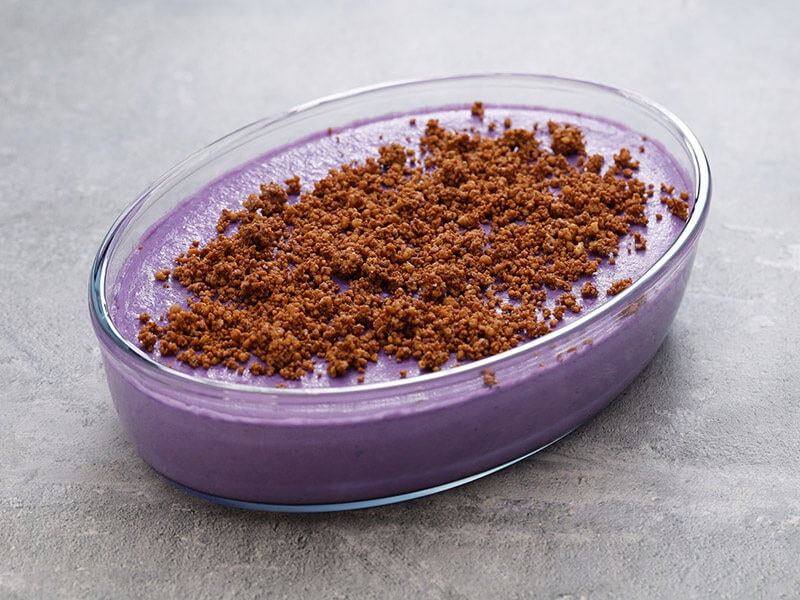
Taro
Taro also provides a wide range of advantages for your health in terms of blood sugar issues, heart, diet, and other diseases relating to cells and risks of cancer. Consuming daily taro can help you:
Promote Weight Loss
Taro is always well-known for being rich in fiber. Each gram of fiber can help decrease body fat. Also, fiber slows the process of consuming food and keeps you full longer. In this way, it can reduce the number of calories in your body and potentially help you lose more weight.
Control Blood Sugar
The fibers in Taro can reduce the risk of diabetes as they can regulate the release of insulin and glucose in the body.
Reduce Heart Disease
Your heart health can be improved as Taro has a significant amount of potassium. With such an advantage, potassium can facilitate the transport of fluids between membranes and tissues in the body and help to reduce pressure on blood circulation.
Lower Risks Of Cancer
Quercetin coming from the purple pigment of taro can protect your body from free radicals – the main factor causing many potential cancer growths.
Improve Digestion
Taro root vegetables have more dietary fiber than potatoes, which helps to boost the digestive function and lower the rate of having issues such as diarrhea, and constipation.
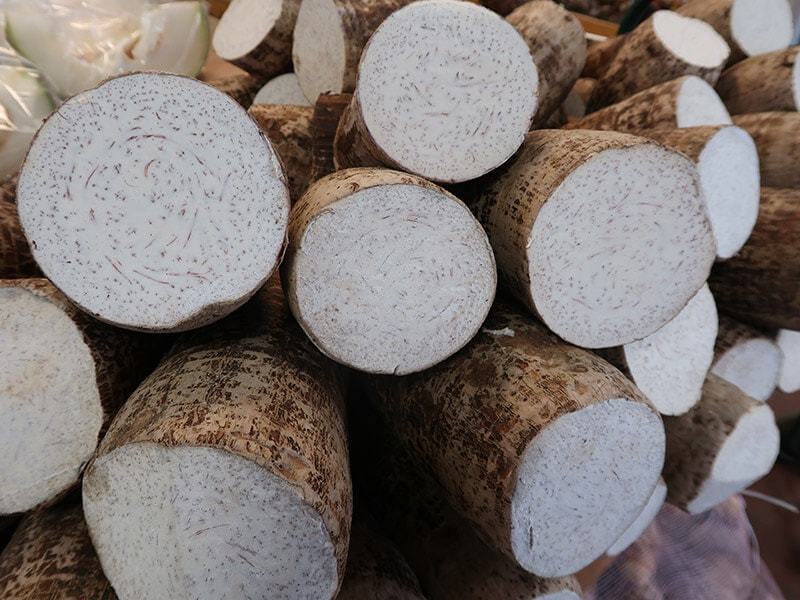
FAQs
Find out more questions below that can clarify your curiosity on the differences between Ube and Taro.
Now Atlas, You Can Tell Which Ube And Taro are!
With such great health benefits that they provide to your health and the high aesthetic and eye-catching look that they bring to your dishes, it’s worth saying that both Ube and Taro are incredibly versatile products.
Have you been able to differentiate between Ube and Taro? Now you can enjoy shopping and choose between Ube and Taro. I am glad that I can help you to learn more about these vegetable roots and start your favorite dishes with the right and suitable ingredients.
Do you find it helpful? Share it with your friends!
References:
- en.wikipedia. 2022. Dioscorea Alata. [online] Available at <https://en.wikipedia.org/wiki/Dioscorea_alata>
- en.wikipedia. 2022. Taro. [online] Available at <https://en.wikipedia.org/wiki/Taro>
- fdc.nal.usda.gov. 2022. FoodData Central Search Result: Pamana, Whole Purple Yam. [online] Available at <https://fdc.nal.usda.gov/fdc-app.html#/food-details/545079/nutrients>
- Nutritiondata.self.com. 2022 Taro, Cooked, without salt Nutrition Facts & Calories. [online] Available at <https://nutritiondata.self.com/facts/vegetables-and-vegetable-products/2674/2>
- ncbi.nlm.nih.gov. 2022. National Library of Medicine. [online] Available at <https://www.ncbi.nlm.nih.gov/pmc/articles/PMC4863277/>

